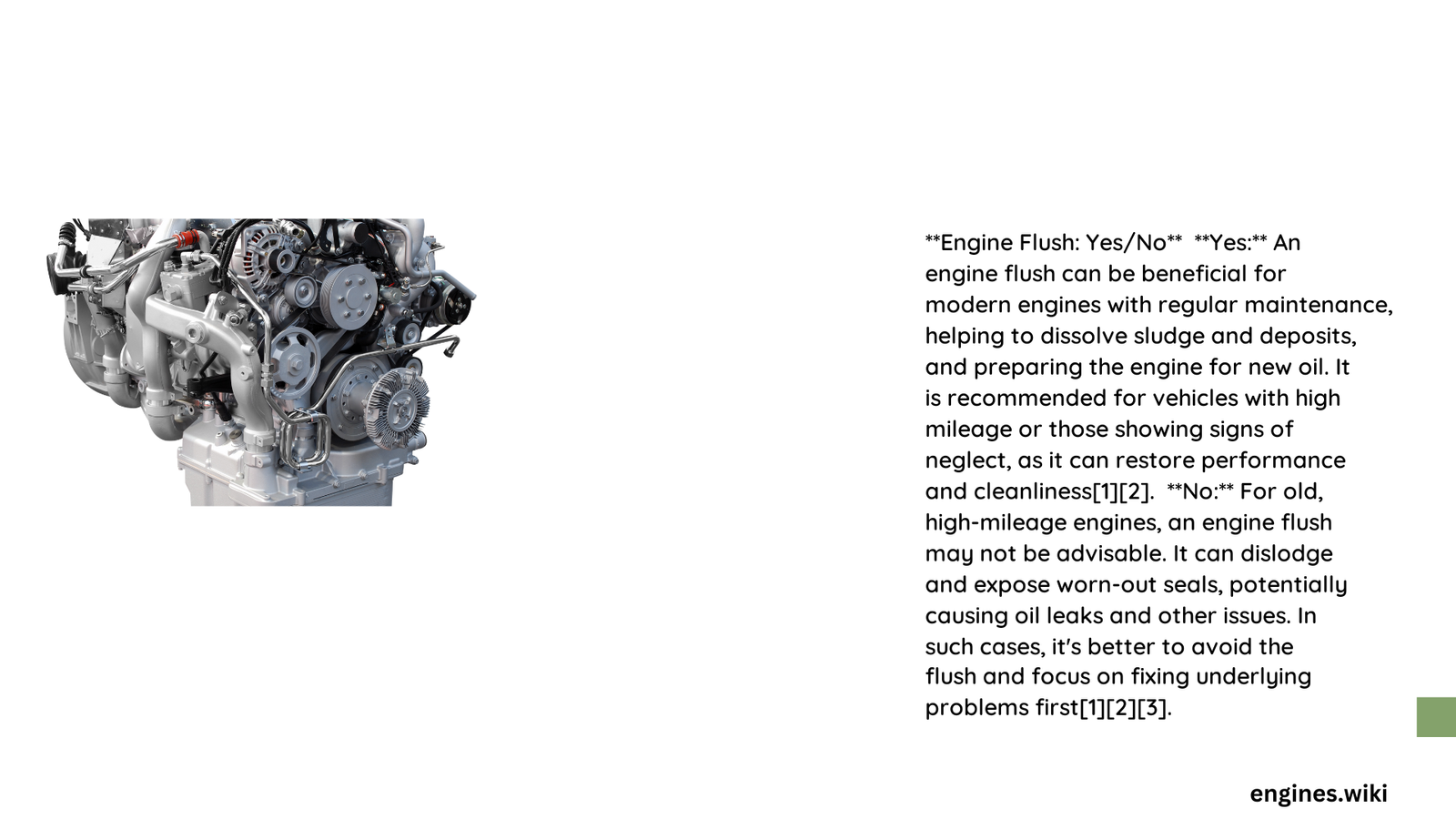Engine flush remains a controversial topic among automotive experts, with passionate arguments for and against this maintenance procedure. Vehicle owners face a critical decision: should they flush their engine or stick to traditional oil change practices? This comprehensive guide explores the nuanced world of engine maintenance, providing clear insights into when, why, and how an engine flush might benefit or potentially harm your vehicle’s performance.
What Exactly is an Engine Flush?
An engine flush is a chemical process designed to remove accumulated sludge, deposits, and contaminants from an engine’s internal components. Unlike standard oil changes, this procedure uses specialized cleaning agents to dislodge and eliminate built-up residues that can impede engine performance.
Why Do Mechanics Debate Engine Flush Procedures?

Are Engine Flushes Always Necessary?
Not all vehicles require an engine flush. The necessity depends on several critical factors:
| Vehicle Age | Flush Recommendation |
|---|---|
| New Vehicles (0-5 years) | Rarely Needed |
| Mid-Range Vehicles (5-10 years) | Conditional |
| Older Vehicles (10+ years) | Potentially Risky |
What Signals a Potential Need for Engine Flush?
Key indicators include:
– Decreased fuel efficiency
– Unusual engine noise
– Visible oil sludge during oil changes
– Reduced engine performance
– Excessive oil consumption
What Are the Potential Risks of Engine Flush?
Can Engine Flush Cause Damage?
Potential risks include:
1. Exposing hidden engine wear
2. Dislodging protective deposits
3. Compromising seal integrity
4. Potential oil leaks in older engines
How to Determine if Your Vehicle Needs an Engine Flush?
What Factors Influence Engine Flush Decision?
Consider these professional recommendations:
– Manufacturer’s maintenance guidelines
– Vehicle’s current mileage
– Driving conditions
– Oil change history
– Engine’s overall condition
What Are Professional Mechanics’ Recommendations?
Most automotive experts suggest:
– Consult your vehicle’s manual
– Use high-quality oil
– Perform regular oil changes
– Consider professional assessment before flush
What Are the Cost Implications?
How Much Does an Engine Flush Cost?
Typical cost ranges:
– DIY Kit: $15 – $25
– Professional Service: $50 – $100
– Potential repair costs if complications arise: $200 – $1,000
What Are Alternative Maintenance Strategies?
How Can You Protect Your Engine Without Flush?
Recommended alternatives:
– Use synthetic oils
– Follow manufacturer’s maintenance schedule
– Address issues promptly
– Regular oil analysis
– High-quality oil filters
Final Verdict: Engine Flush Yes or No?
The answer isn’t universal. Each vehicle requires individual assessment. While engine flushes can be beneficial in specific scenarios, they’re not a one-size-fits-all solution.
Pro Tip: Always consult a certified mechanic who understands your specific vehicle’s requirements before making a decision.
Recommended Action Steps
- Review vehicle maintenance manual
- Assess current engine condition
- Consult professional mechanic
- Make informed decision based on expert advice
Conclusion
An engine flush is a nuanced maintenance procedure requiring careful consideration. By understanding your vehicle’s unique needs and consulting professionals, you can make an informed decision that protects your engine’s long-term health.
